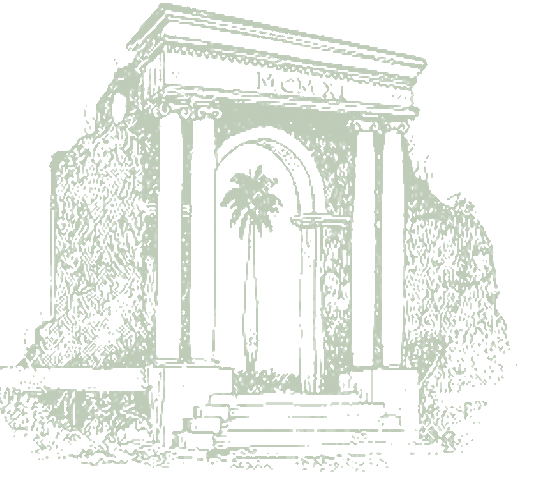|
In 2005, CariPac was formed as a consortium of all of the Land Grant institutions in the insular areas to help address the challenges of providing food and agricultural education to college and university students in the Caribbean and Pacific islands (CariPac). CMI/CRE's mission is to improve the quality of life in the Marshall Islands. It achieves this mission by organizing its efforts under the following four programs: 1. Aquaculture; 2. Small Island Agricultural Systems; 3. Families, Youths & Communities; and 4. Food, Nutrition & Health
CMI/CRE’s programs are delivered through: 1. Extension outreach that offers information to the community through non-formal education and demonstrations; 2. Research-based projects in agriculture and aquaculture, which address specific needs and concerns in the Republic of the Marshall Islands; and 3. Resident Instruction with formal credit-level courses leading to a certificate program offered at the College.
CMI/CRE Programs 1. 4-H’s After School Programs Sixty youths from Mili and Arno atolls were trained on traditional and basic life skills. Basic computer skills were offered as part of these training programs. Evaluations were done for the workshops, which showed that 80% of the participants projected a more positive attitude and actually enjoyed learning the skills they were taught. Three local elementary schools and sixty Upward Bound students participated in a nutrition education training. The students learned about food safety, nutrition, and learned how to prepare simple, nutritious, and delicious snacks. In addition, nineteen members of the Majuro Middle School 4-H club participated in the "Youth to Youth in Health Leadership and Life Skills Training Seminar".
2. Food Nutrition & Education More than two hundred female participants comprised of housewives, young mothers, and college staff senate members attended and completed the Expanded Food Nutrition and Education Program (EFNEP) organized workshops. These workshops covered twelve EFNEP lessons and five cooking demonstrations. The participants were appreciative because they have gained valuable knowledge and information that can help them and their families to live healthy. The EFNEP extension agent and the college’s nurse organized events to talk about diabetes. During the World Food Day 2008 – 2009s’ celebrations, the EFNEP and 4-H Extension Agents demonstrated to participants on how to prepare and to cook mackerel patties and unripe banana salad. The audiences enjoyed sampling the finished products. Thirty local recipes were collected from several homemakers to measure nutritional values in order to find out how nutritious they are for the body. During the college’s spring break, the EFNEP extension agent accompanied the female dorm students to their retreat at a neighboring isle, where she presented on nutrition and health related issues and conducted cooking demonstrations with them. A workshop on food security and sufficiency was conducted to farmers. The main objective of the workshop was to teach how to cultivate sweet potato and soft taro plants. The participants also learned composting techniques.
3. Container Gardening In the urban villages where space is a limiting factor, the agriculture extension program continued work with the technical support of ROC Taiwan Technical Mission on promoting container gardening with around 100 clients. The container gardening concept was presented during several community events and announced on the prepared weekly radio programs.
4. Aquaculture Farming and Research A new aquaculture hatchery was dedicated and ready for operation. The researcher focused on the effect of partial/full replacement of live microalgae in the hatchery spat production of the black-lip pearl oyster ( Pinctada margaritifera), as well as providing onsite training for aquaculture extension agent on hatchery and farming operations of pearl oysters and species. A visiting professor from Delaware State University spent three months conducting hatchery research investigating growth differences among the pearl oysters (P. margaritifera) stocked at three different densities. Another study was on oyster immunological and pearl oyster seeding trial. The aquaculture staffs, who were assisted by the professor, monitored the oysters in the farm and hatchery. Both elementary and high school students visited and toured the aquaculture facility. Direct one-to-one contacts were made with students, youth, administrators, community and fishermen on aquaculture activities on pearl farming and sea cucumber farming. A collaborative work by CMI Land Grant / MIMRA on the spat (pearl oyster juveniles) produced around 40,000 of 1-inch size spat. Students, community members, and dignitaries were also taught aquaculture topics on pearl and sea cucumber between October 2007 and September 2008. Water, algal, spat and larval samples were analyzed for bacteriological comparisons between the two CMI-MIMRA hatchery facility’s water quality profiles in November 2008.
5. Water Quality Awareness Two workshops were held at the CMI Arrak campus on water quality awareness. Community residents learned about how to sanitize their own water and how to test their water for cleanliness. The results were that of 100 samples, 88 were positive for total coliforms only and 55 were positive for both total coliforms and E.coli. At the end of the workshops, a water quality factsheet was produced, published, and distributed to participants. In response to a growing need for education on water safety, CMI Land Grant staff visited the homes of 88 owners to provide technical assistance on how to treat their water. At each visit, translated brochures on water treatment were provided and demonstrations were given on how to install a first flush diverter. Two first-flush diverters have been installed to monitor their effectiveness. Videotapes of the installation process have been made for future use. |


